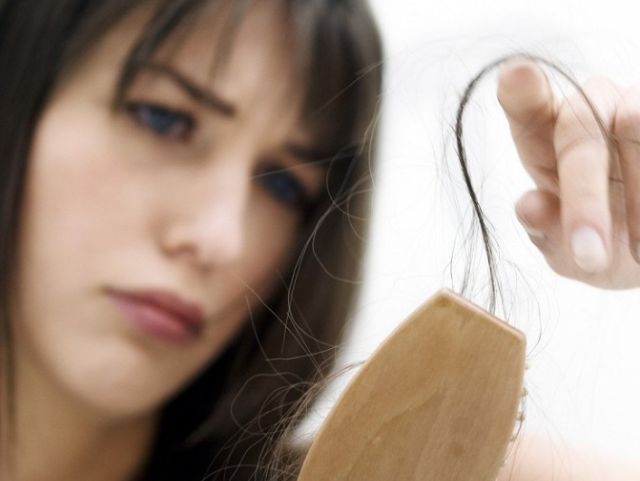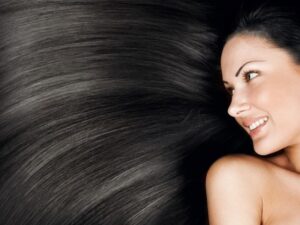Do you wake up with hair all over your pillow? Does your receding hairline frighten you because balding runs in your family? Are you confused about which shampoo or hair colour you must use? Read on for answers to all your mane related queries.
Men and women look at their hair as their “crowning glory”. Our hair and the way we wear it, is an important part of our persona. From hair extensions to eyelash extensions, human beings are willing to devote a significant amount of time and money towards beautifying their hair. Hair fall and balding have a significant psychological impact on the way we look at ourselves. A lot of people attribute hair fall to poor quality hard water. Salty water can change the texture and softness of your hair, making it dry, frizzy and prone to split ends. Invest in a water softening filter. Certain models can even be attached to the shower head directly. Add baking soda to a bucket of water, leave it overnight and use the top half of the bucket to wash your hair. You can also add 2 spoons of vinegar to half a bucket of water and pour it on your hair as a final rinse. The vinegar will wash out that excess salt from your hair. Apply a leave-on conditioning oil to your hair AND use protective caps when you’re in the pool.
But water cannot cause the hair to fall out from the roots. And bad water cannot make your hair any thinner.
If you hair regularly clogs the drain, if you wake up with hair all over the pillow, or if you sweep up a substantial amount of hair every day, then that’s definitely excessive. Such hair fall can happen in seasonal phases. It could also be due to internal ailments like anemia, thyroid disease, polycystic ovaries or lupus. Pregnancy, delivery, surgery and anaesthesia, cancer and chemotherapy can also lead to excessive hair fall. Visit a qualified dermatologist to begin treatment with nutritional supplements and hair tonics containing peptides, amnexidil, phytoestrogens, retinaldehyde or any other synthetic or botanical hair stimulant. US FDA has also approved laser combs and laser hats after some clinical trials showed success in controlling hair fall. Dermatologists have used low level laser therapy and fractional erbium glass laser to treat hair fall with some success. These lasers generally work better in women than men.
Balding (Alopecia) on the other hand, is the result of hereditary and hormones, neither of which can be permanently altered. Certain testosterone mimicking herbal products and nutritional supplements containing Whey Protein and Creatine has also shown to cause Alopecia. In fact anything that can increase testosterone levels in the blood, including excessive weight training in women, can theoretically trigger alopecia.
Of the 3000 odd hair stimulants available, only Minoxidil solution (Rogaine®) and oral Finasteride has conclusively and consistently shown good results. However Minoxidil must be used on a long term basis in order to maintain results. When a male patient with balding tells me that they are unwilling to use Minoxidil, I pretty much give up and ask them to look forward to balding gracefully! Consult your dermatologist to check if you are a good candidate for these treatments, the pros and cons, and long term prognosis.
Minoxidil works best in the early stages of balding. If you have already missed that bus, then consult a hair restoration surgeon (who could be a dermatologist or a plastic surgeon) to discuss other options like Platelet Rich Plasma injections (with or without microneedling) and hairtransplantation surgery. Stem cell based therapies (also known as hair cloning or DP Cell Culture), are still in the very early and experimental stage. In most countries, stem cell therapies for alopecia are only recommended on a clinical trial basis, and not as a paid therapeutic option. The dangers of uncontrolled growth and tumours/cancers cannot be ruled out. I personally do not recommend Mesotherapy. Hair restoration surgeons across the world concur that Mesotherapy is a painful and expensive treatment fraught with complications, not backed by scientific evidence.. and does not even work!
Camouflage options like sprays, hair fibers, powder cakes and hair crayons are also popular as a temporary solution. If your balding is limited to a small patch, you can also use a hair piece or toupee, which can be attached using a tape, clip or glue. If your alopecia is a result of chemotherapy, then this is a temporary situation which is best addressed by using scarves or wigs, while you wait for your hair to grow out.
While hair on the head is desirable, unwanted hair on the body is considered unattractive. In fact in human beings, body hair does not serve any purpose at all. Due to the time, pain, cost and irritation associated with shaving, waxing and depilatory creams, more and more people are keenly looking at laser hair reduction treatments, for long term, quick and effective elimination of body hair. From ear hair, knuckle hair, to a “unibrow” and even pubic hair, unwanted hair on any part of the body can be successfully removed. Laser treatments can permanently thin down your hair and slow down hair re-growth. It requires 8-12 treatment sessions, followed by regular annual maintenance treatments on a long term basis. You can expect 70-80% reduction in hair growth.
I am often asked about hair oils. Hair oils do not really treat hair fall and cannot stop balding. If you have an oily or dandruff prone scalp, you must in fact, avoid oiling your hair. But hair oils are excellent conditioners. I personally love coconut oil, argan oil, avocado oil and grapeseed oil.
Are there any natural or medicinal ingredients that can protect hair, nourish scalp and possibly delay hair graying? Yes, there are. My recommendation includes gooseberry, curry leaves, black tea, henna, coffee powder, soapnut (reetha), acacia (shikakhai), phytic acid (Q Sera Black serum), Melitane (Altris gel) and Psoralia (NoGray Lotion). Premature hair graying may be an indication of Vitamin B12 deficiency, especially in vegans, so get your blood tested for confirmation.
Coming to shampoos and conditioners- they are now available in a confounding number of formulas.
If you have really oily scalp that requires daily shampooing, look for a Clarifying shampoo, and avoid conditioners.
Use a hydrating or repairing shampoo for dry and damaged hair which are splitting or falling out.
Use strengthening, fortifying and volumizing shampoos to boost fine or limp hair, but these may leave your hair very dry, so remember to condition the ends. Volumizing shampoos can also remove colour and reverse perms and chemical relaxers.
Use a zinc pyrithione, ketoconazole or salicylic acid based shampoo if you suffer from itchy, flaky or dandruff-ridden scalp.
Frizz control shampoos can tame kinky hair.
Use pH balanced shampoos for colour or chemically treated hair.
Use an additional leave-on conditioner or a deep conditioning mask if your hair remains dry despite using a rinse off conditioner. Shampoos with added sunscreens are always popular, as sun exposure can also lighten and damage your hair.
Dry shampoos are an exciting new innovation for men and women on the go. They are available in the form of powders and sprays which do not require the use of water. They absorb oil build up on the scalp and leave your hair looking clean and fresh without drying them out or risking split ends. It is a good option on long travels, camping trips (where water is luxury), post surgery, and for fitness enthusiasts who need to wash their hair every day, but want to avoid water to prevent split ends. Dry shampoos are not ideal for daily or long term use. You will still need wet shampoo and water from time to time. And dry shampoos do not get rid of scalp flaking and dandruff. Comb and de-tangle your hair before use. Make sure your hair is dry. Dust the shampoo powder, or spray it evenly to scalp holding it at least 6 inches away from the head. Wait for 10 minutes, then comb through again to get rid of excess powder. Yes.. It is THAT simple!
There is also a lot of confusion about the humongous variety of hair dyes that are available today. As a general rule, darker colours are less damaging versus bleaching your hair several shades lighter than your natural colour. Dark colours contain a chemical called paraphenylene diamine (PPD), while bleaches contain hydrogen peroxide. The common belief that colouring your hair can turn them gray is a nothing but a modern day myth.
For long lasting colour, and to effectively and uniformly colour gray hair, use permanent hair dyes. These don’t get washed off despite repeated shampooing, and only a root touch up is needed every 4-6 weeks. Loreal Excellence Creme, Revlon ColorSilk and Loreal INOA are good examples.
Demi permanent dyes do not contain ammonia and have lower concentrations of peroxide, so these are safer to use. These cannot bleach yourhair, so you have to go for either a similar or a darker shade than your present hair colour. This is a good option if you do have damaged hairand do not have a lot of grays. The colour looks more natural, but gets washed out in 15-30 shampoos. These also contain PPD so do a patch test behind your ear to rule out allergic reactions. The Loreal Casting Creme Gloss, Garnier Nutrisse and Streax hair colour are good examples.
Semi permanent dyes and vegetable based dyes do not contain PPD, ammonia or peroxide. They only coat the outer layer of hair without penetrating it. Most contain henna, indigo, catechu, coffee and manjistha. This is a good option for those who have less than 30% gray hair on their scalp and are allergic to PPD containing dyes. But they only last 4-8 washes and cannot lighten your natural hair colour. Garnier HerbaShine and Vegetal hair colours are good examples.
Gradual hair dyes require multiple applications over a period of weeks to cover grays and achieve the correct colour. They contain metal oxides which are not compatible with permed or straightened hair. The colour fades off easily with shampooing so it requires constant re-application.
Temporary hair colours (“hair chalks”) get washed out in a single shampooing. These are best used for fun and special occasions, or to use bright colours like pink or lavender! You can also use it for temporary highlights, if you are not looking for a permanent change, or like changing your hair colour frequently.


